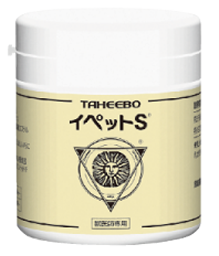 |
【Product name】IPET-S
【Ingredients】 dextrin, Taheebo extract, yeast extract, sucrose fatty acid ester, silicon dioxide (fine)
【Content】 Approx. 9 g (150 mg × 60 tablets)
【Evaluation tests】 Acute oral toxicity test, Mutagenicity test, Chromosomal aberration test, Eye irritation test, Primary skin irritation test, Skin hypersensitivity test, Phototoxicity test, Skin photosensitization test,
Long-term ingestion test
Weight |
Up to 10 kg |
Up to 20 kg |
Up to 30 kg |
30 kg or more |
Recommended dosage |
2 to 4 tablets |
4 to 6 tablets |
6 to 8 tablets |
8 tablets or more |
|








